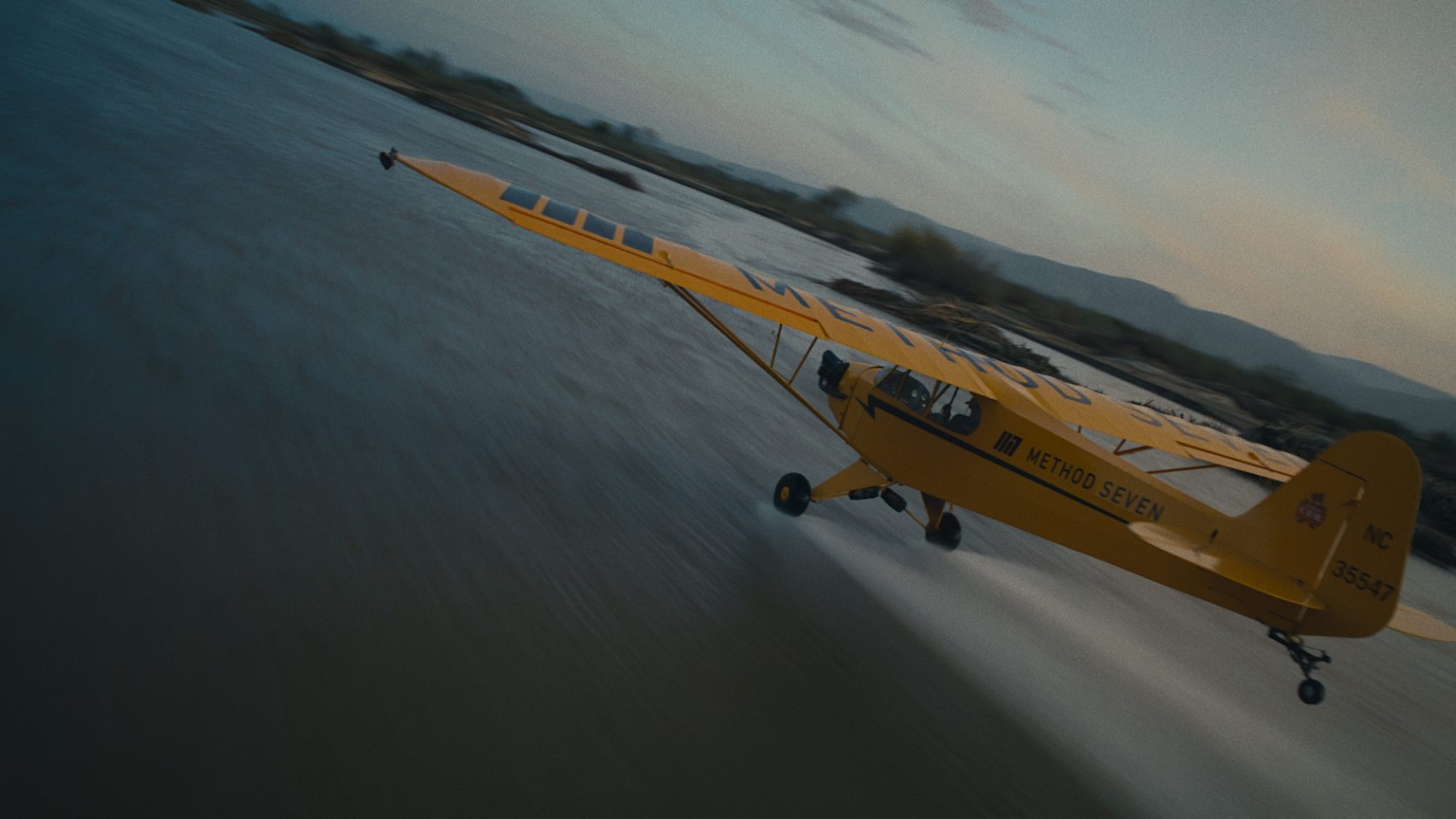
In his documentary short 26,000 Days, Director Henry Behel chronicles both the nuanced technical ability and the grab-life-by-the-horns worldview of ambitious Airshow pilot Eric Tucker. Taking an almost surf film-like approach, the doc depicts Tucker with a calm, graceful aura as he takes to the skies to execute death-defying stunts in a plane built for much less. Tucker, as both a pilot and a person, is a fascinating figure to watch and Behel does an excellent job of balancing the thrilling cinematography of his aerial acrobatics with Tucker’s reflective, philosophical ruminations. DN is delighted to present 26,000 Days’ online premiere today and is joined by Behel below for a revealing conversation about his own origins as a pilot, the contemplative, multi-year process of making 26,000 Days with Tucker, and the specialised technical equipment he utilised to achieve the film’s breathtaking agile camerawork.
When did you first encounter Eric Tucker?
I first met Eric on a film I was making for the Central Coast Airfest back in 2018, which requires some background. I actually got my start shooting airshow films. My dad was a military pilot and, after he retired, an air race pilot at the National Championship Air Races – like NASCAR but fifty feet off the ground at 400mph. So suffice it to say that flying was his life. We were estranged when I was a kid and in my early twenties I realized I wasn’t going to have a relationship with him unless I learned to do the thing he loves, so I learned to fly. At that same time I was transitioning from my theater kid youth to film and had just moved out to California. I was living in an airplane hangar with a Russian warbird as a roommate. It was a rather big pivot. Anyway, at this same time I was becoming passionate about film and it was only natural I would try to put cameras inside the planes I was learning to fly. That led to those early airshow films and eventually launched my career.
Anyway, back to Eric. He has this infectious enthusiasm for flying, and for life, and it’s impossible not to have a smile on your face when you’re around him. And his flying just blows you away. Most people just do your standard loop, tumble, and roll business, but here’s this guy who takes a dinky 1930s 100hp fabric airplane, the Piper Cub, shuts the engine off, and does manoeuvres that airplanes can barely do under full power. He also does a ‘rodeo clown’ routine where he lands that same plane on top of an ambulance. I immediately wanted to make a film with him.
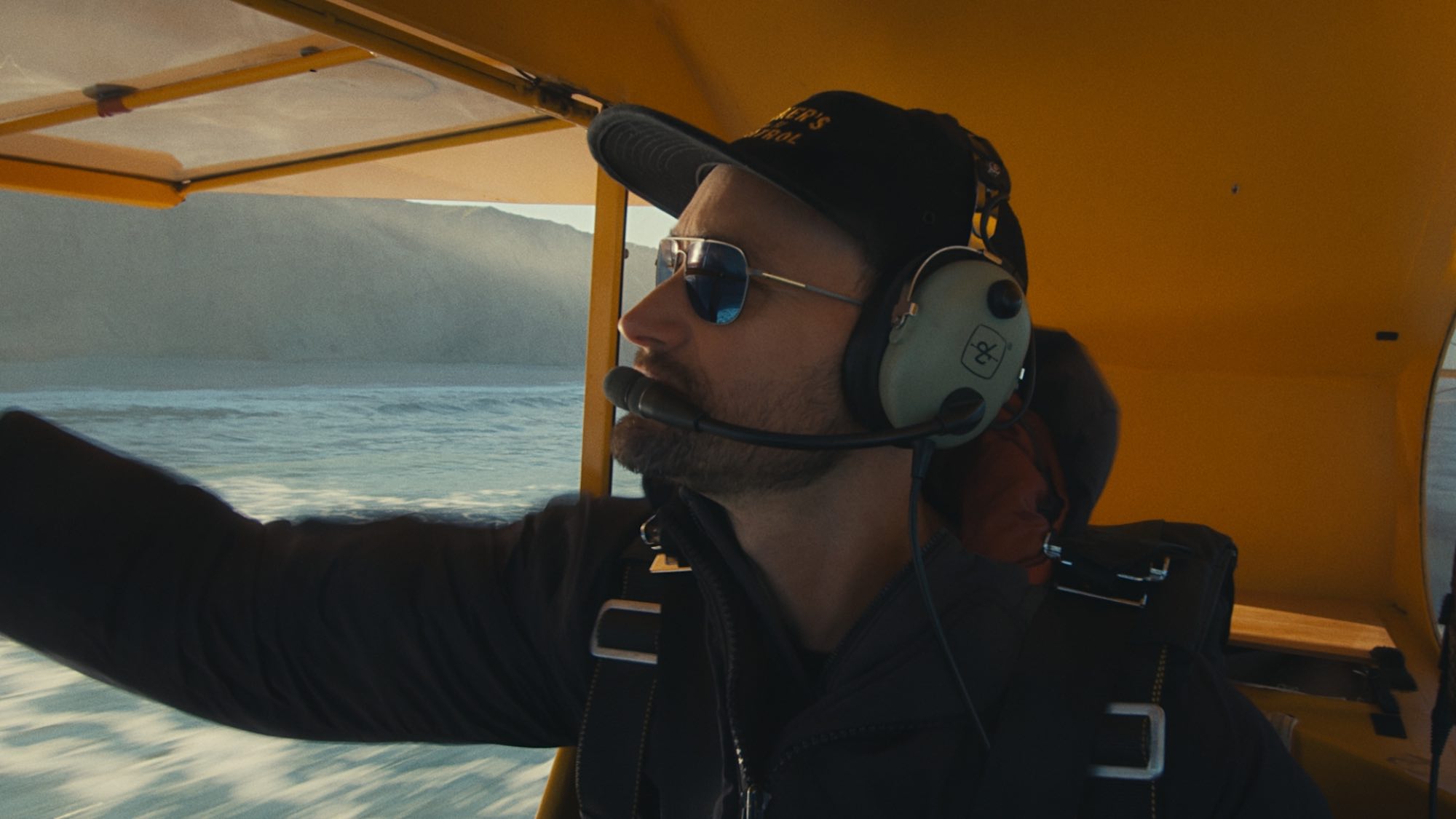
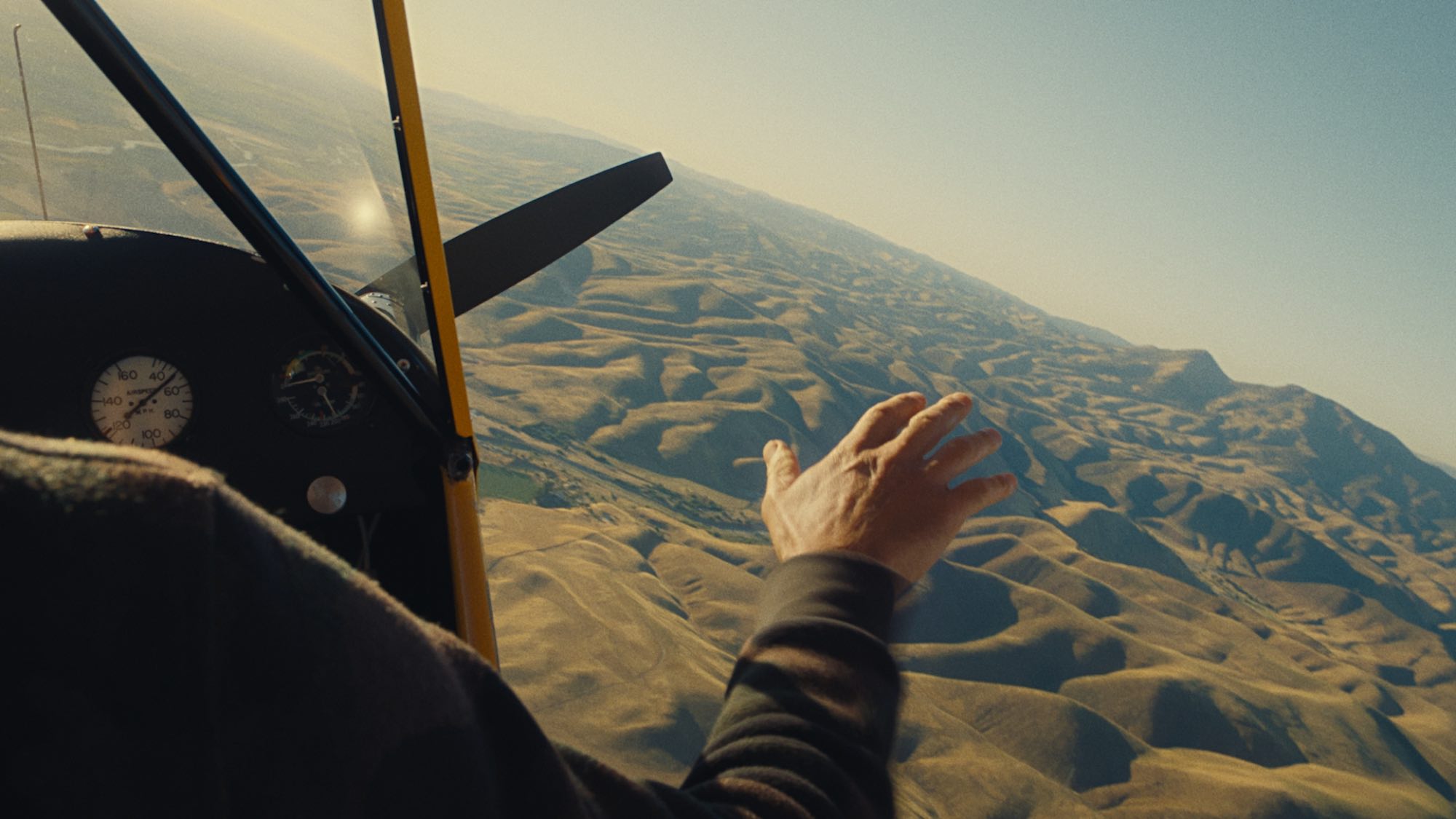
And what was your initial approach to making a film about him?
Our initial idea was just a kind of ‘surf film’ with an airplane and we knew we wanted to film it in California in the spring when the grass was green. It would end up being three years before we actually did it, but every few months we’d hop back on the phone and get carried away in long conversations about flying and about life. I started to realize that Eric had a deeper perspective that the world needed to hear. It was something about how an awareness of death makes for a more present life. And I realized that the ‘dead-stick’ routine was the perfect metaphor for using closeness to death to connect with life. The film crystallized around that concept.
I started to realize that Eric had a deeper perspective that the world needed to hear.
Later, I learned about the cancer he went through in his twenties, which he describes as “you’re shocked into the present moment of living,” and here was another example of a brush with death leading to a more vivid connection to life. The dots started to come together.
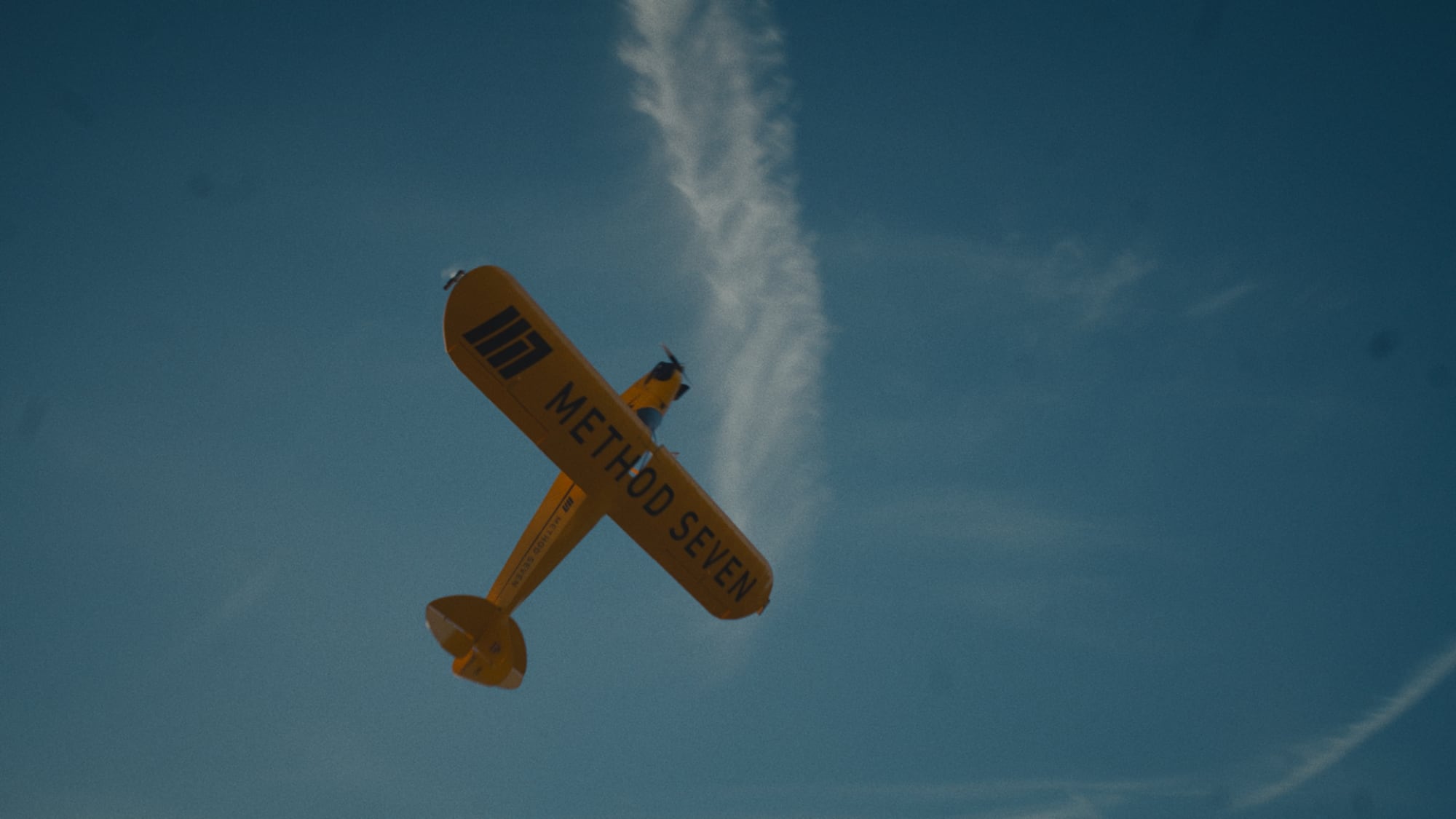
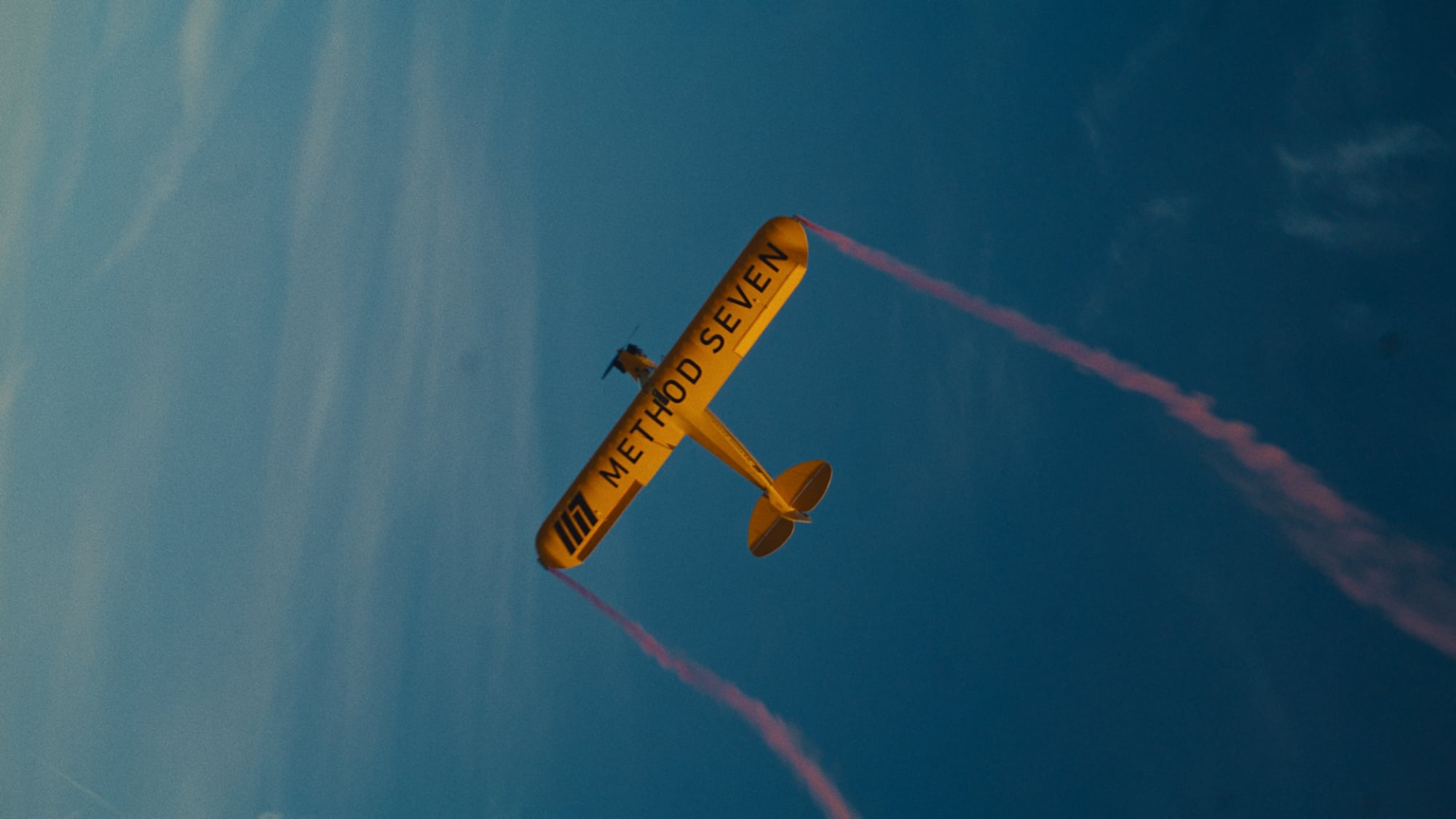

Could you walk us through your aerial photography? It’s so graceful and looks incredible.
In terms of execution, Eric always describes his connection with flying as “soulful”. That was the word that I kept coming back to with the cinematography and the edit. We did two main shoots. The first was with the Bearhawk Patrol backcountry airplane I fly which is about as low-fi as it gets with aviation filming. I take the baggage door off of the airplane, hang a Ronin 2 in the baggage compartment, and shoot out the open door. I’m flying and the operator sits in the back. The airplane ended up getting a flat tire and the whole shoot got messed up, but we still walked away with these incredible low shots over the ocean, which are still in the film, and some beautiful interviews. I walked away from the weekend thinking now I have to finish this film.
I wanted to use that tech to create long takes where we really followed Eric down as he plummets out of the sky with the engine off, that was soulful to me.
Which brings me to shoot two. Somewhere in the three years between meeting Eric and making this film, I had met Alex Vanover, our incredible drone pilot, and began to use FPV drones in formation with airplanes to get a new perspective on flight that no one had ever seen before. I wanted to use that tech to create long takes where we really followed Eric down as he plummets out of the sky with the engine off, that was soulful to me. And I really wanted everyone to see that the engine was stopped the whole time. Formation FPV is very low-margin, challenging stuff, and there are very few people in the world I would trust to shoot this way. Everything was very carefully briefed and choreographed. It took all day just to get a few takes, even the Cub climbing to altitude takes an age.
What equipment or technology do you use in addition to the Ronin 2 to achieve the shots?
Equipment-wise, most of the film was shot on the Alexa Mini with Arri/Zeiss Super Speeds, but the FPV footage was on the Komodo and the airplane interiors were Blackmagic Pocket 4K. Handheld, hard mounts, FPV, and Ronin 2 from the Bearhawk. Shoutout to our incredible Colorist Parker Jarvie who matched some challenging footage and gave it such a beautiful filmic look.
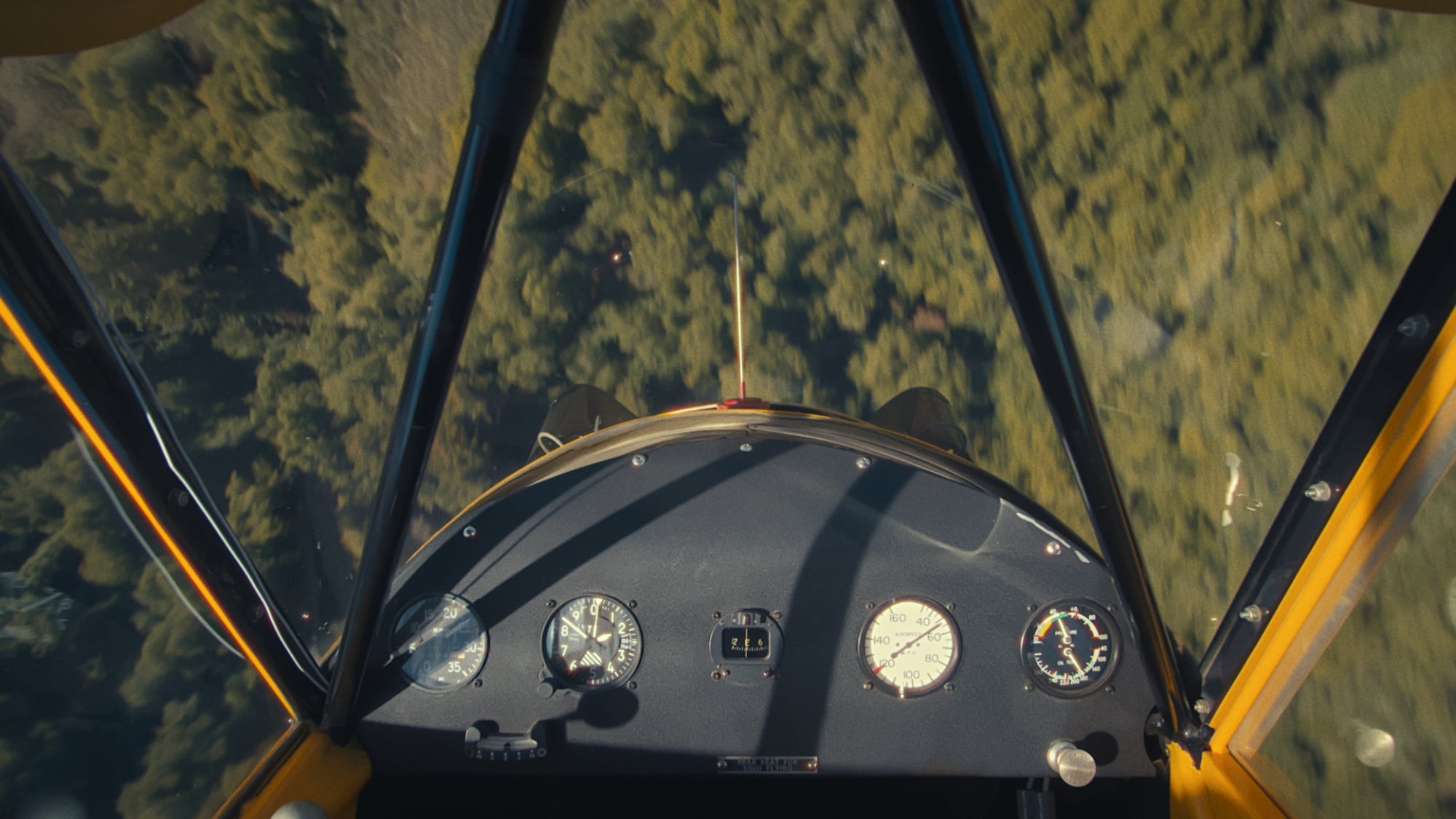
Who else were you collaborating with in post-production? And how long did it take you to piece all of your footage together?
Post was a collaboration with the incredible Talia Pasqua. We knew we wanted to create bookends at the beginning and end of the film on that desolate airstrip with that wild barking dog, and we knew we wanted a cold open that teased the dead-stick, which would later return as the climax of the film. I remember when she finished the rough cut, she called me and said, “OK, you might think I’m crazy, but I’m holding these shots for a really, really long time”, but when I watched it, those long takes were the shots that made the film, and the flying, feel special. We ended up holding them all even longer. She also did such a great job with the moments of Eric with his family, which was really important to us. I find him as inspiring as a human being and a dad as he is as an aviator.
I’m always in search of that feeling I had when I first learned to fly, the magic and absurdity of being a human who can leave the ground.
How do you think your knowledge as a pilot affects how you approach aerial photography?
Being a pilot helps me think outside the box with aerials. I think I’m always in search of that feeling I had when I first learned to fly, the magic and absurdity of being a human who can leave the ground. Most of us experience flight as a bus ride in a cramped tube, and that’s missing so many strong emotions that flight can elicit. Awe, majesty, terror, nausea, adrenaline, wonder. Of course, pilot training helps me understand how things can move and where the edge of the envelope is. It also helps me communicate with picture pilots and camera pilots in terms that they can understand. What we did in this film is a very unusual formation to put it mildly, choreography between an FPV drone and an airplane with its engine stopped, but it’s still a formation.
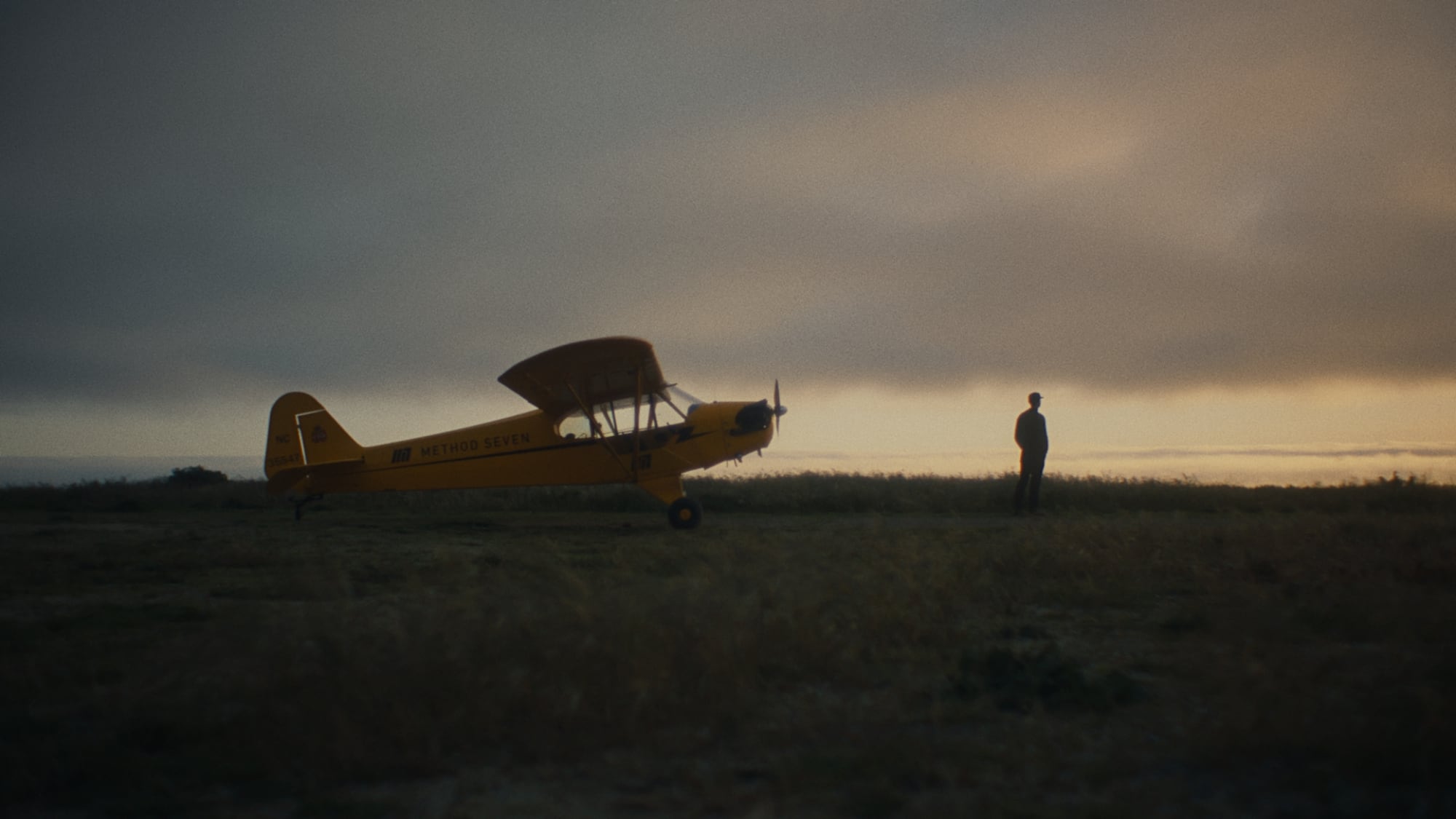
You work a lot in commercial filmmaking, how do you feel that benefits the other avenues of your work, for example, documentary filmmaking?
The best part of being a commercial filmmaker is that it’s a shortcut to my 10,000 hours. Without commercials my cinema brain would get cobwebs. It’s about reps. I learn so much from what works and what doesn’t work on commercials. I also meet incredible collaborators that seem to want to work with me when I call them with hare-brained ideas like chasing an airplane with its engine off as it falls out of the sky.
What is your work life looking like at present?
So I got married in August, so that’s been lovely! We both love to travel and ski, so between that, flying, and commercials, I’m on the go quite a bit. Wouldn’t have it any other way. I still make sure to take time to run my longstanding D&D campaigns, yes, I’m a huge nerd.


